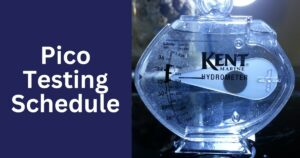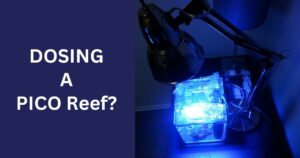There are many varieties of small aquariums that can be used as a pico reef tank, but there’s nothing quite like growing a reef in a flower vase or cookie jar.
To top it off, you may already have something at home that you can use. Or you can ask a friend or family member if they are willing to part with one. That means one less expense on hardware that you can use towards purchasing corals.
Let’s look at some of the pros and cons of using a cookie jar and a flower vase.
Cookie Jar (Free – $20)
Pros:
- Heat is retained longer compared to a thin glass vessel. Slower temperature swing down (i.e. 82f to 78f). This also means less strain on the internal heater.
- Resistant to cracks and chips.
- Easier to access the internal areas compared to a really curvy vase.
- Difficult to knock over.
Cons:
- Thick glass dilutes viewing crispness. The jar I chose has 2 vertical seams where the jar was melted together and the glass has some sort of glaze to it.
- Glass used for cookie jars tend to have a lot of imperfections. I spent 15 minutes going through all the jars in the store until I found the best one.
- During the summer months heat can build up quickly and takes longer to cool down.
- Using a power head could create a whirlpool effect inside the jar.
- Difficult to seal the top of the jar compared to a flower vase.
Flower Vase (Free – $15)
Pros:
- Aesthetically pleasing to the eye!
- Easy to seal. Helps prevent water evaporation which helps maintain salinity levels and reduces salt creep around the top of the vase.
- Usually smaller and easy to transport (new location or cleaning).
Cons:
- Many flower vases are made of thin glass that are prone to chipping and cracking (especially when placing or moving live rock around)
- Thinner vases typically have a small base foot print. Even with a lot of live rock inside the vase to weigh it down, it could be easier to accidentally knock it over compared to a cookie jar.
- Smaller necked vases can make it difficult to take out or place new corals, live rock, and hardware.
The cookie jar I’ve used has a short neck and doesn’t gradually narrow. This makes it difficult to seal, but it’s not impossible. There will a need for some air exchange with both vessels since we will be pumping air underwater to create flow. If it was totally sealed, something would blow eventually.
I would have bought a flower vase if I had found one, but I didn’t. However, I’m still very happy with my cookie jar and both options can still achieve the same results.
The Best Lids For Vases And Jars
The purpose of a lid is to minimize water evaporation and keep the waters salinity as stable as possible. The way this happens is that water will evaporate, condensate on the underside of lid, and eventually drip back down in to the water. Later in this setup series I will talk more about salinity, evaporation, and specific gravity.
The best lids for our purposes are ones that are transparent (glass or plastic):
- Bowls
- Plates
- Plant Saucers – cheap and can be manipulated easily
Vase Lids
As I mentioned, a flower vase has a great neck to be able to invert a bowl, plate, or plastic saucer to create a lid.
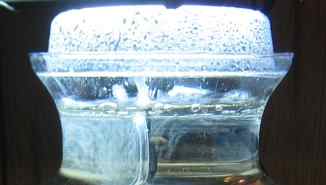
As the neck of the vase gets narrower it prevents the “lid” from falling all the way inside the vase. It creates a pretty good seal for evaporation and also means that salt creep will be limited to the neck and edges of the lid.
In this case you could call it a day and simply rest the lid on top of the air line and heater power cable. This would leave a small gap, but that’s okay.
Alternatively, you could drill a hole for the air line and cut a notch for the heater cable to allow a better seal. If you’re electrically competent, you could drill a hole for the heater cable as well by dismantling the heating wiring to fit through the hole and then reattach it.

Vase Images by Brandon Mason (The History Of Pico Reef Biology)
However, this can be extremely dangerous and takes away some of the simplicity of setting up this pico tank.
Cookie Jar Lids
A challenge with most cookie jars is that their necks are usually short and don’t narrow like vases. So it is very difficult to create a seal using a glass bowl or plate.
Using a flat piece of acrylic on the top of a cookie jar will not create a good seal. Salt will creep out between the top of the jar and the acrylic. Moisture will follow this same path and either evaporate or condensate at the edge and run down the side of the jar.
Here is a picture of an acrylic lid that doesn’t seal well and will have salt creep issues:
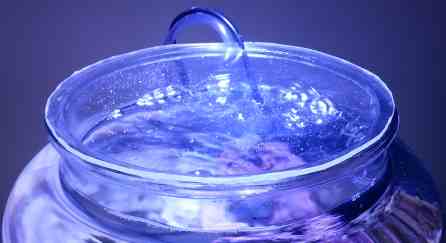
I’m currently testing some ideas to make a better seal for the jar, but for now, a clear plastic plant saucer is doing the trick.
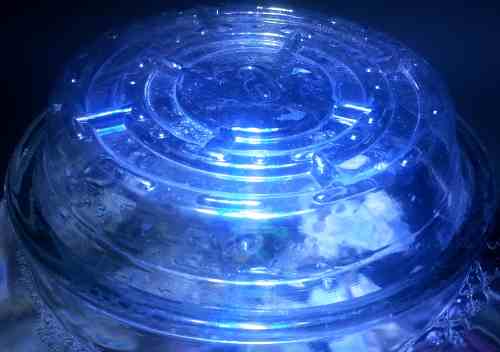
I’ve trimmed a 7” saucer to fit a 6” hole so that it needs to be bent a little to fit inside the top of the jar. The saucer is trimmed to 6.1 – 6.2” to allow it to remain in the neck by outward force from the plastic trying to go back to its original shape.
It takes a little bit of care to squeeze and manipulate the plastic in to the hole. It’s easier when the notches are cut for the tubing and cables as seen here:
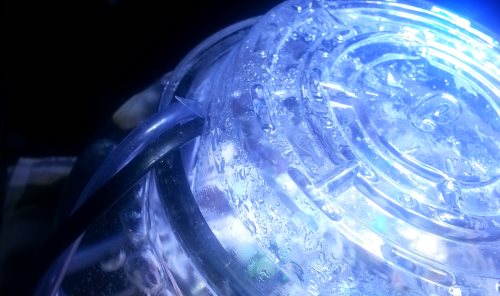
I’ve also cut the plastic at the back to allow space for the air line and heater power cable. It’s not pretty but it’s doing pretty well in terms of keeping evaporation down and salt from creeping around the edges.
How Do I Decide?
To be honest, both are great choices and can get the job done.
I decided to use a 2 gallon cookie jar because 1.5 – 2 gallon flower vases were difficult to find during the winter season. I would have preferred to use a flower vase for its aesthetic appeal, but I ended up with a cookie jar and I’m happy with the way it’s turned out.
Which one is more appealing to you?



